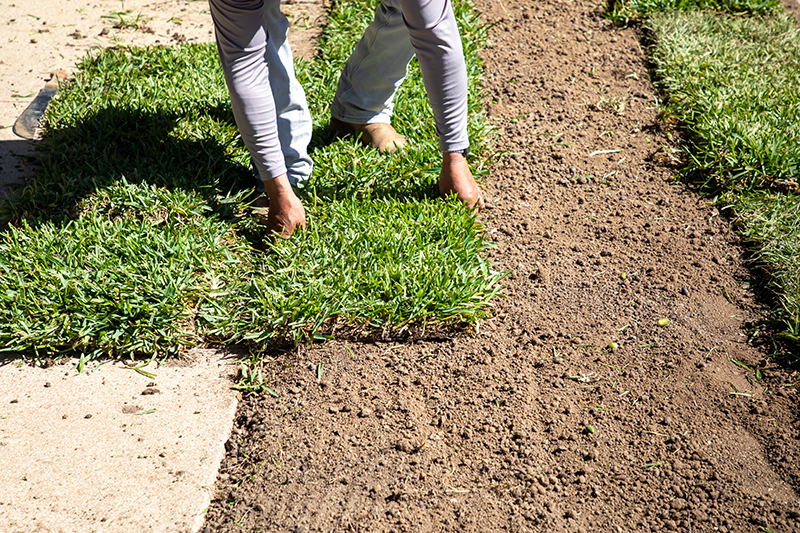Sodding your yard can be quite an investment. Understandably, you want to get it right the first time and enjoy a healthy, beautiful lawn for years to come. And while there’s no time like the present, successfully laying new sod means waiting for the perfect time.
Best Time for Laying New Sod
The sod producer did most of the heavy lifting for you. Your top priority, then, is to ensure your yard is prepped and primed to receive it. This means waiting until the ground has thawed and the threat of refreezing is over.
We recommend waiting until mid to late spring or anytime during the summer or early fall. The ideal soil temperature for laying new sod is ~50℉ or warmer. You can use a soil thermometer to get the most accurate reading. The warm temperatures help the pre-grown root system to easily integrate with the soil. This way, the roots have enough time to become well established with the soil before cold weather arrives.
Laying New Sod: 5 Tips for Beginners
There are right and wrong ways to go about laying new sod. Set up your yard for success with the following tips:
1. Prepare Your Soil Ahead of Time
Your soil needs to be ready for sod. A little preparation can make your sod look more natural, even, and professional. To get your yard ready for sod, we recommend aerating or tilling areas that are impacted by heavy traffic or areas with densely packed soil. This allows more room for the new roots to grow into the soil. This is also a good opportunity to fill in any low spots, remove large roots or stones, and cover the surface with a fine layer of loose soil.
2. Choose the Right Sod for Your Lawn
Not all sod is created equal. It’s a good idea to explore different options so you can get a mix of grasses that will work well for your lawn. Ask about the varieties and their colors, density, and tolerance to disease. Find out how much water and sun they will require. It’s better to take some extra time to research different types of sod for Alabama yards if it means getting the varieties that won’t leave you disappointed.
3. Water Frequently
Your new sod will need lots of water in the first couple of weeks, especially if you lay your new sod during the summer. The water needs to penetrate at least the first four inches from the surface. To see when your new sod has rooted, just give it a gentle tug. After the first couple of weeks once your sod has taken root, you can pull back on watering frequency as long as you water the sod for longer periods of time.
4. Apply a Starter Fertilizer
The right fertilizers can help you achieve strong, healthy growth faster. Applying a fertilizer that’s rich in phosphorous that feeds the sod with essential nutrients that will allow it to quickly root in the soil. We recommend staying clear of high nitrogen products until root system is well established; usually 3-5 months.
5. Use a Push Mower
It’s important not to mow your sod too soon. You want to give your sod enough time to root, plus taking off half or even a third of the grass blade can shock the system. However, you also don’t want to wait too long to mow. It’s best to use a push mower for the first few grass cuttings because riding lawn equipment can be too heavy for sod. In addition, it’s a good idea to wait until the ground is dry and firm. Too much water can leave your lawn soft, and a mower may cause damage.
We’re here to help you make your yard as healthy and beautiful as possible. Contact us today to schedule your spring lawn treatment!


Recent Comments